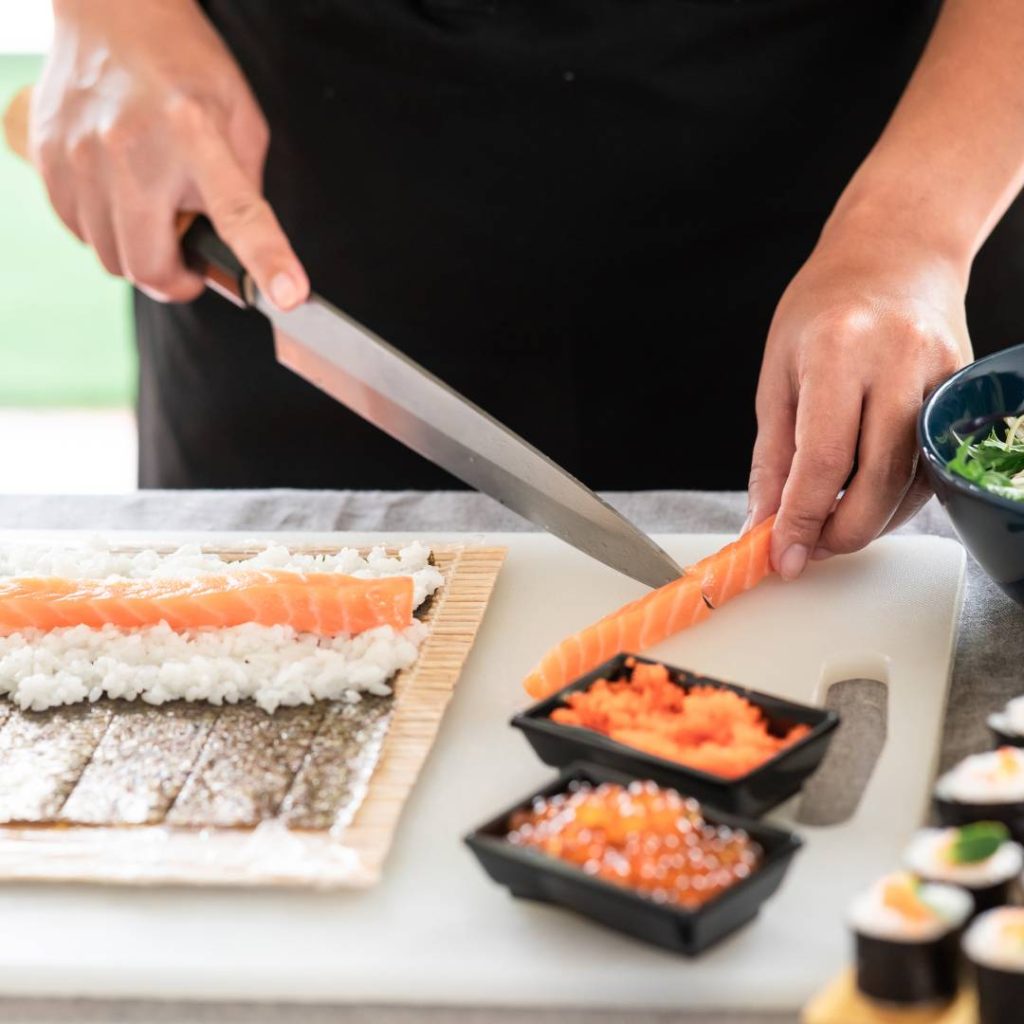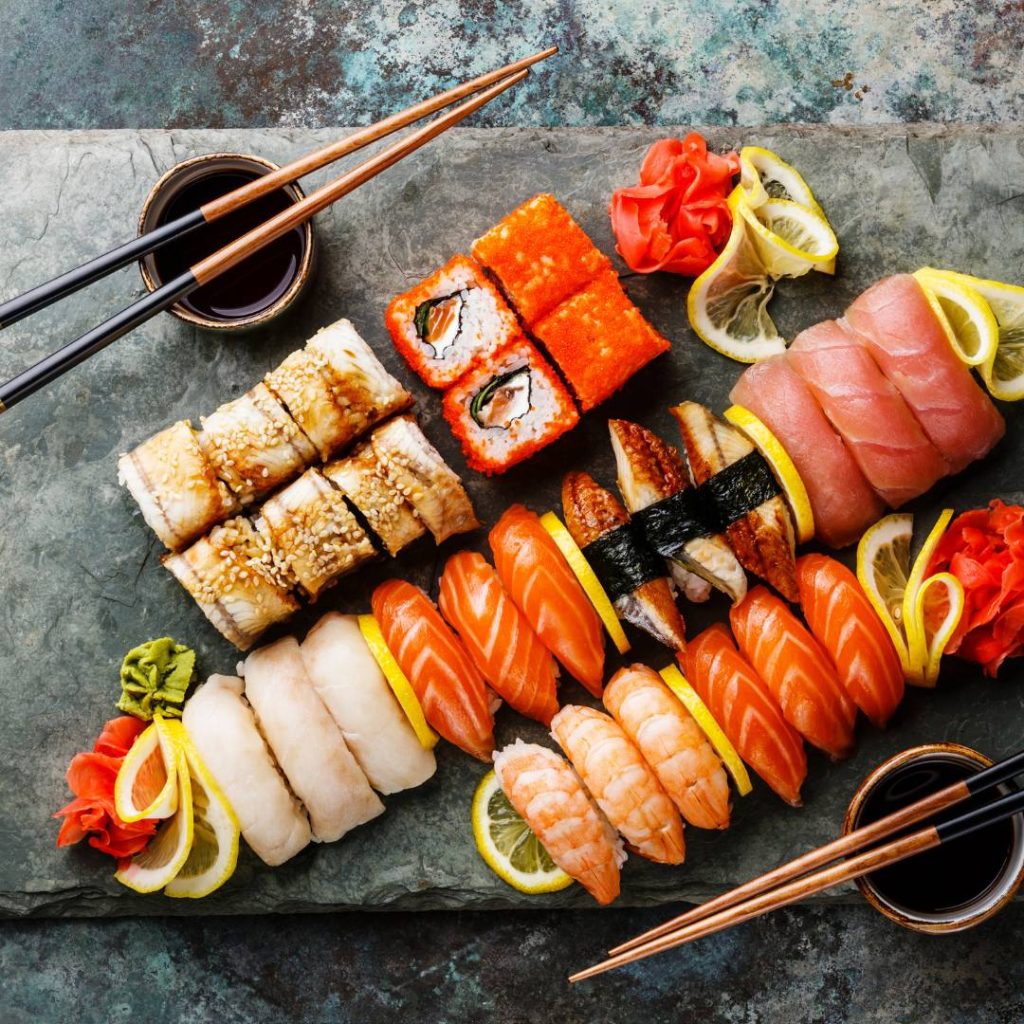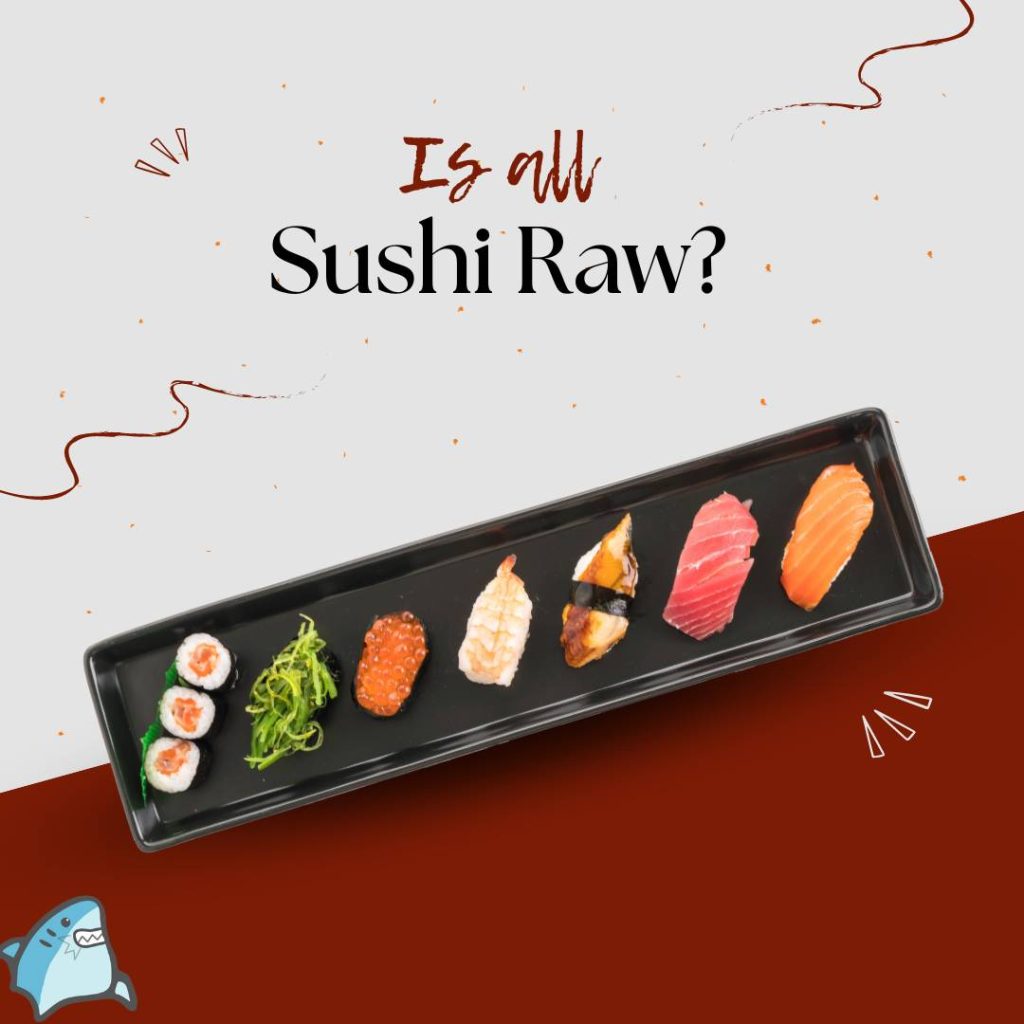Sushi is a Japanese dish that has gained popularity worldwide. It is a traditional Japanese cuisine that has been around for centuries. There is a common misconception that all sushi is raw. However, this is not entirely true. While raw fish is a popular ingredient in sushi, not all sushi contains raw fish.
Understanding sushi is important to know whether it is all raw or not. Sushi is made up of vinegared rice, which is the most important ingredient. The rice is seasoned with sugar, salt, and vinegar to give it a unique taste. Sushi can be filled with a variety of ingredients, including raw or cooked fish, vegetables, and eggs. The type of sushi you order can determine whether it is raw or cooked. For example, nigiri sushi is typically served with raw fish, while maki sushi can be filled with cooked ingredients like tempura shrimp or crab meat.
Key Takeaways
- Sushi is a traditional Japanese cuisine that has gained worldwide popularity.
- Not all sushi is raw, and the type of sushi you order can determine whether it is raw or cooked.
- Sushi is made up of vinegared rice and can be filled with a variety of ingredients, including raw or cooked fish, vegetables, and egg.

Understanding Sushi
Origins and Evolution
Sushi is a traditional Japanese dish that has been around for centuries. It originated during the Muromachi period in Osaka, Japan. The word sushi means “sour taste,” which refers to the vinegar used to preserve fish. The dish was initially made by fermenting fish with rice and salt, which helped to preserve the fish for longer periods.
Over time, sushi evolved into the dish we know today. The first sushi chef was Hanaya Yohei, who created the nigiri-zushi style of sushi in the early 1800s. This style involved placing a small piece of fish on top of a small ball of vinegared rice and pressing it together with the fingers. This technique allowed the flavor of the fish to be preserved while also enhancing the texture of the rice.
Sushi Ingredients
The key ingredient in sushi is rice, which is mixed with vinegar, salt, and sugar. The rice used in sushi is typically short-grain rice, which is known for its stickiness. Sushi-grade fish is also essential, as it is fresh and safe to eat raw. Chefs may freeze the fish to kill any parasites or bacteria that could be harmful to humans.
Condiments such as soy sauce, wasabi, and pickled ginger are often served with sushi. Soy sauce is used to add saltiness to the dish, while wasabi provides a spicy kick. Pickled ginger is served as a palate cleanser between bites of sushi.

Is All Sushi Raw?
Sushi is a popular Japanese dish that has gained worldwide recognition for its unique taste and presentation. But is all sushi raw? The answer is no. Sushi can be served raw or cooked depending on the ingredients used. In this section, we will explore the different types of sushi and whether they are raw or cooked.
Raw Sushi
Raw sushi is the most common type of sushi and typically contains raw fish or seafood. The most popular types of fish used in raw sushi include salmon, bluefin, yellowfin, and tuna. Raw seafood such as eel, shrimp, octopus, squid, and yellowtail are also used.
It is important to note that not all fish are safe to eat raw. Some fish, such as salmon, may contain parasites that can cause foodborne illness unless they have been properly handled and prepared. Therefore, it is essential to ensure that the fish used in raw sushi has undergone the proper handling and fermentation process to eliminate any potential health risks.
Cooked Sushi
Cooked sushi is a type of sushi that contains cooked seafood, meat, fruit, or vegetables. Cooked imitation crab meat is a popular ingredient used in sushi rolls. Grilled, steamed, or baked seafood such as eel, shrimp, and squid are also commonly used. Vegetables such as avocado, cucumber, carrots, and mango are also used in cooked sushi.
It is worth noting that even though the ingredients in cooked sushi are cooked, they still need to be handled with care to prevent contamination and ensure food safety.

Making Sushi
Making sushi is an art that requires a lot of patience and practice. It is a dish that is enjoyed all over the world, and it comes in many different forms. In this section, we will explore the different aspects of making sushi, including preparation and techniques, sushi rolls and toppings, and condiments and accompaniments.
Preparation and Techniques
The first step in making sushi is to prepare the vinegared rice or shari. This is done by mixing rice with vinegar, salt, and sugar. The rice is then cooked and allowed to cool before being used for sushi. It is important to use the right type of rice, such as short-grain sushi rice, to ensure that the rice is sticky enough to hold together.
Once the rice is ready, it is time to prepare the fillings for the sushi. This can include a variety of ingredients such as crab, shrimp, avocado, cucumber, fruit, vegetables, carrots, mango, sweet potato, and more. The fillings should be cut into thin strips or small pieces that are easy to roll up in the sushi.
When it comes to rolling the sushi, there are different techniques to use depending on the type of sushi you are making. For example, maki rolls are made by rolling the rice and fillings in a sheet of nori seaweed. Hand rolls, on the other hand, are made by wrapping the rice and fillings in a cone-shaped piece of nori.
Sushi Rolls and Toppings
Sushi rolls come in many different varieties, from the classic California roll to the shrimp tempura roll. The California roll is made with crab, avocado, and cucumber, while the shrimp tempura roll is made with fried shrimp and other fillings. Uramaki, or inside-out rolls, are another popular type of sushi roll that is made by rolling the rice on the outside of the nori seaweed.
When it comes to toppings for sushi, there are many options to choose from. Some popular toppings include salmon, tuna, eel, shrimp, and more. These toppings can be served raw or cooked, depending on the type of sushi being made. Other toppings include sesame seeds, tobiko (flying fish roe), and more.
Condiments and Accompaniments
No sushi meal is complete without condiments and accompaniments. Soy sauce is a popular condiment that is used to add flavor to the sushi. Wasabi paste, made from Japanese horseradish, is another popular condiment that is often served alongside sushi. Pickled ginger is also commonly served with sushi to cleanse the palate between bites.
Chopsticks are the traditional utensil used to eat sushi, although some people prefer to use their hands. Sake, a Japanese rice wine, is often served with sushi to complement the flavors of the dish.
It is important to use fresh, high-quality ingredients when making sushi. Sushi-grade fish should be used for raw fish toppings, and it is important to ensure that the fish is fresh and has been properly frozen to kill any parasites. Proper handling and storage of ingredients are also important to prevent contamination and ensure food safety.

Sushi Safety and Quality
Food Safety
When it comes to sushi, food safety is paramount. Raw seafood, including raw fish, can contain parasites and bacteria that can cause foodborne illnesses. Therefore, it is essential to ensure that the sushi you are eating is prepared safely and hygienically.
One way to ensure sushi safety is to only eat sushi-grade fish that has been properly handled and stored. Sushi-grade fish is typically frozen to kill any parasites that may be present. Additionally, it is important to ensure that the sushi is prepared in a clean and sanitary environment by a skilled and trained sushi chef.
It is also important to be aware of the types of fish that are safe to eat raw. Some freshwater fish, such as yellow perch or brook trout, are not safe to eat raw. Stick to saltwater species, such as salmon, tuna, yellowtail, and mackerel, for your sushi. Tuna tends to have the lowest risk of foodborne illness among raw fish.
Quality and Freshness
In addition to food safety, the quality and freshness of the fish used in sushi are also important factors to consider. Sushi-grade fish should be fresh and of high quality to ensure that it tastes good and is safe to eat.
When selecting sushi, look for fish that is firm and has a bright, shiny appearance. The flesh should be translucent and free of any discoloration or blemishes. If the fish looks dull or has a strong odor, it may not be fresh.
It is also important to note that not all sushi is raw. Cooked fish, such as shrimp and eel, are commonly used in sushi as well. Additionally, sushi can include other ingredients, such as vegetables and fruits, which can provide additional flavor and nutrition.

Sushi Variations
Sushi is a Japanese dish that is enjoyed all over the world. While many people believe that sushi always contains raw fish, there are actually many variations of sushi that do not include raw fish at all. In this section, we will explore some of the different types of sushi that are available, including regional variations and vegetarian and vegan options.
Regional Variations
Sushi has been a part of Japanese cuisine since the Muromachi period (1336-1573). Over time, different regions of Japan have developed their own unique styles of sushi. Some of the most popular regional variations of sushi include:
- Nigiri-zushi: This is a traditional style of sushi that consists of a small ball of rice topped with a slice of raw fish or other seafood. It was invented by Chef Hanaya Yohei in the 1800s and is still popular today.
- Maki rolls: These are sushi rolls that are made by wrapping sushi rice and fillings in sheets of seaweed. There are many different types of maki rolls, including Uramaki (inside-out rolls) and California rolls (made with imitation crab meat).
- Temaki: These are hand rolls that are made by wrapping sushi rice and fillings in a cone-shaped piece of seaweed. They are usually eaten as a snack or appetizer.
- Osaka-style sushi: This is a type of sushi that is popular in the Osaka region of Japan. It is made with larger pieces of fish and rice than other types of sushi.

Konnichiwa! (Hello!) I'm Pat Tokuyama, a Japanese tofu cookbook author, who travels for music, food, and adventure. If you like Japanese tea, checkout some of the newestorganic japanese tea, matcha bowls and noren and more!
** Curious about the Plant Based Japanese Cooking Club? ** Learn more here!
Vegetarian and Vegan Options
If you are a vegetarian or vegan, you may think that sushi is off-limits. However, there are many vegetarian and vegan options available. Some popular vegetarian sushi options include:
- Vegetable rolls: These are sushi rolls that are filled with vegetables like avocado, cucumber, carrots, and mango.
- Sweet potato rolls: These are sushi rolls that are filled with cooked sweet potato.
- Nigiri sushi: This type of sushi can be made with a variety of vegetarian toppings, such as egg, tofu, and vegetables.
Sushi in Popular Culture
Sushi has become a popular food item in many parts of the world, and its popularity has been fueled by its portrayal in popular culture. Sushi has been featured in movies, TV shows, and even video games.
One of the most famous sushi scenes in popular culture is from the movie “Jiro Dreams of Sushi”. The movie is a documentary about Jiro Ono, an 85-year-old sushi master who runs a 10-seat sushi restaurant in Tokyo. The movie features several scenes of Jiro and his apprentices preparing sushi, and it has helped to popularize sushi around the world.
Sushi has also been featured in several TV shows, including “Iron Chef America” and “Top Chef”. In these shows, contestants are often asked to prepare sushi dishes, and the judges evaluate the dishes based on their taste, presentation, and creativity.
In addition to movies and TV shows, sushi has also made its way into the world of blogging. There are many food bloggers who write about sushi, and they often provide tips on how to prepare sushi at home, as well as reviews of sushi restaurants.
Overall, sushi has become a popular food item in many parts of the world, and its popularity shows no signs of slowing down. Its portrayal in popular culture has helped to make it more accessible to people who may not have tried it before, and it has also helped to elevate the status of sushi as a culinary art form.












Konnichiwa! (Hello!) I'm Pat Tokuyama, a Japanese tofu cookbook author, who travels for music, food, and adventure. If you like Japanese tea, checkout some of the newestorganic japanese tea, matcha bowls and noren and more!
** Curious about the Plant Based Japanese Cooking Club? ** Learn more here!